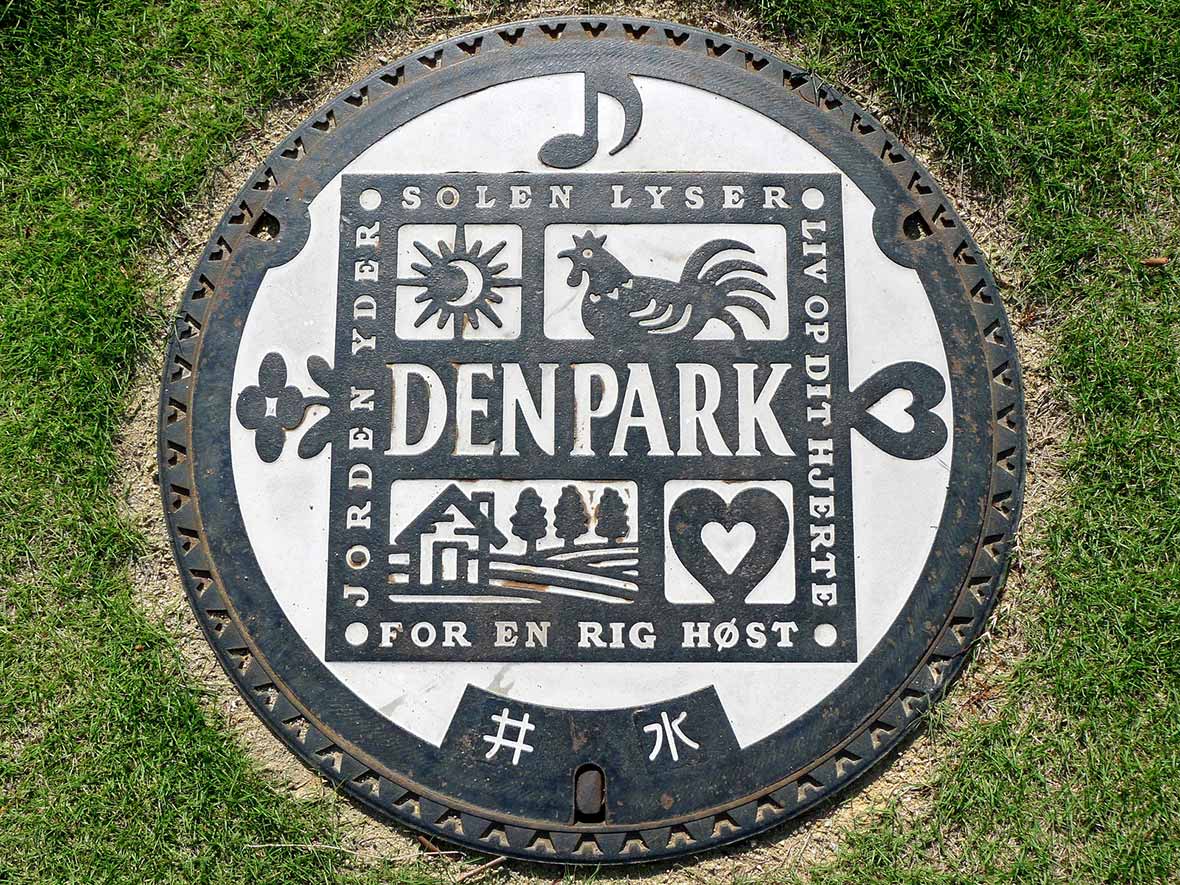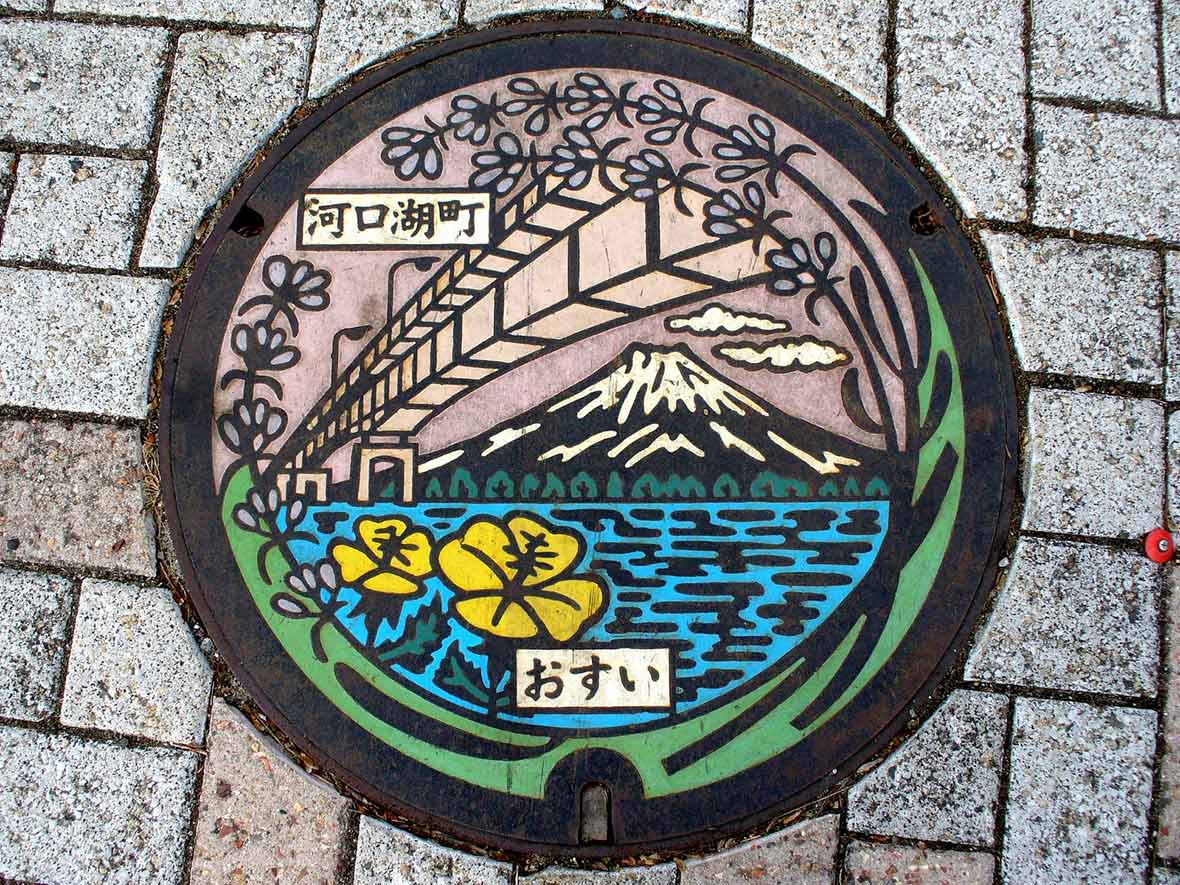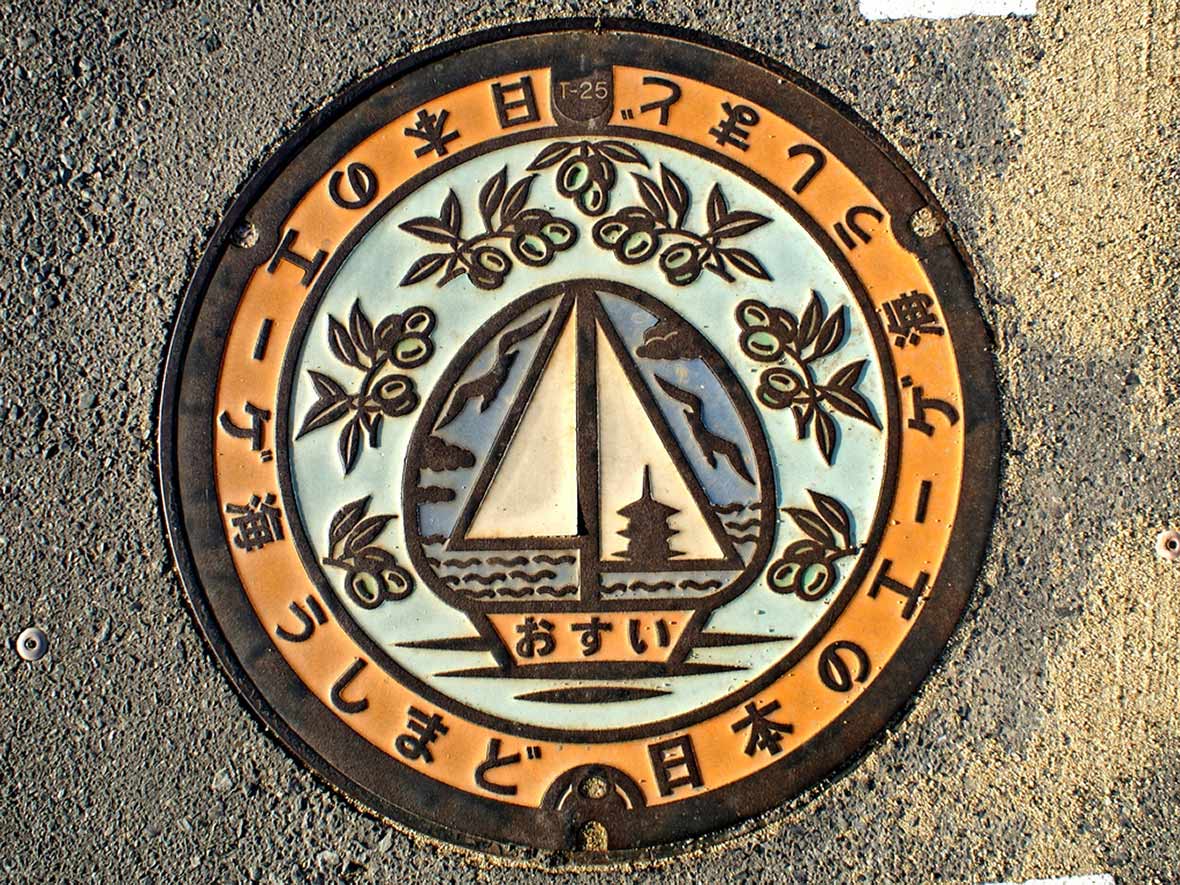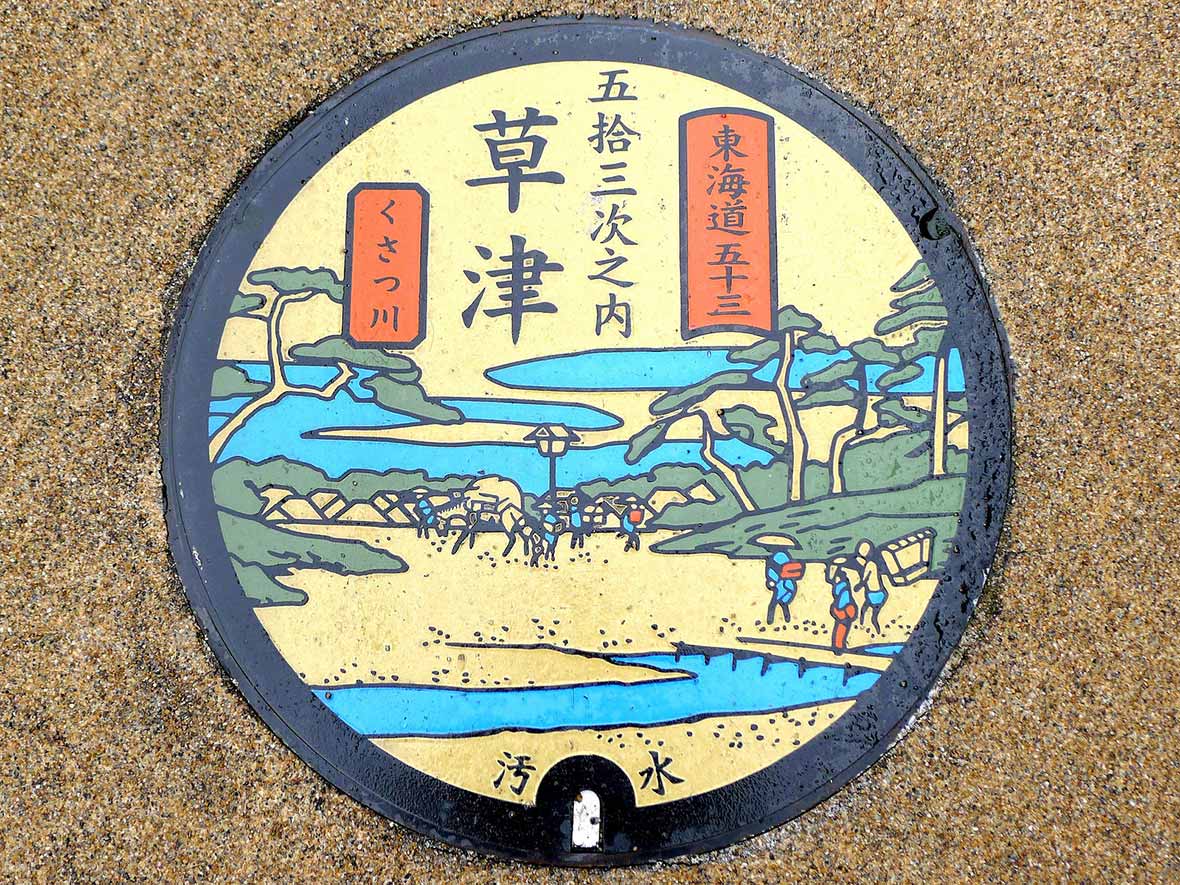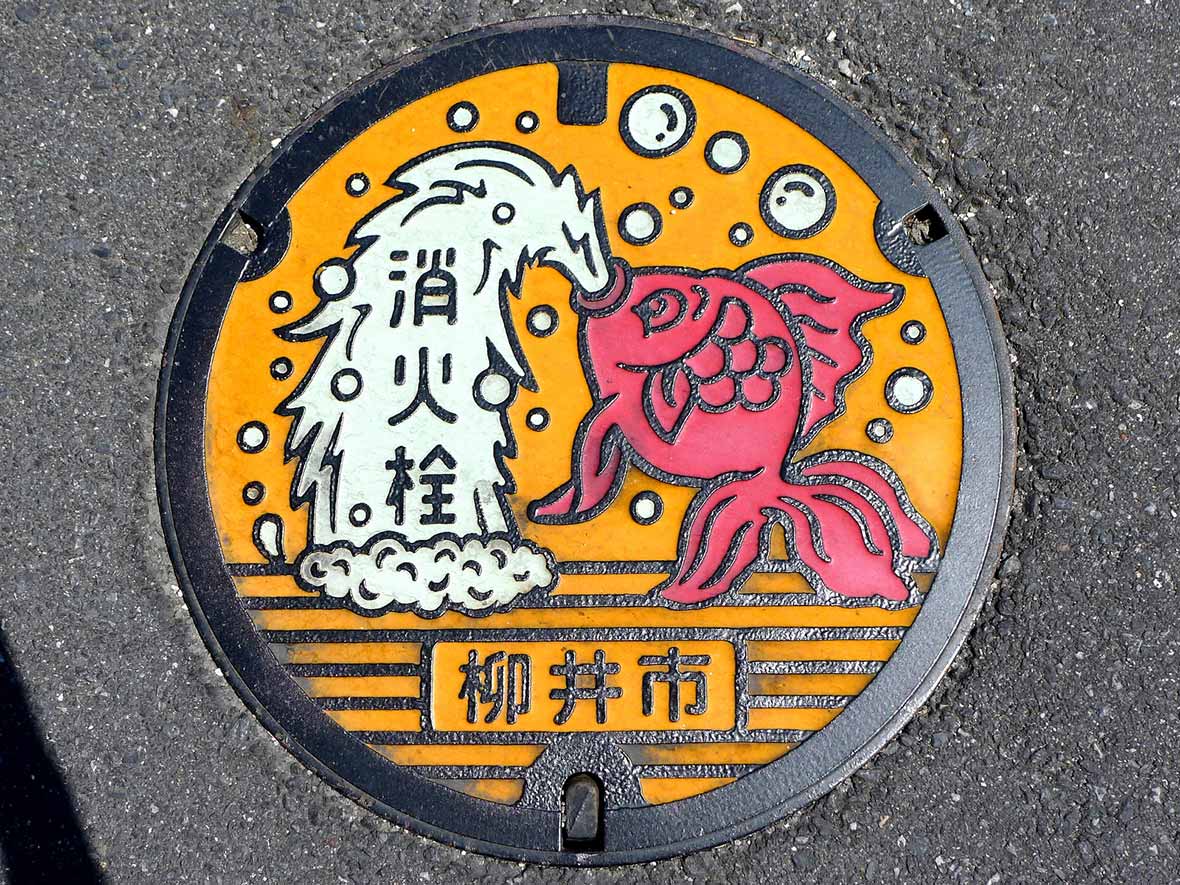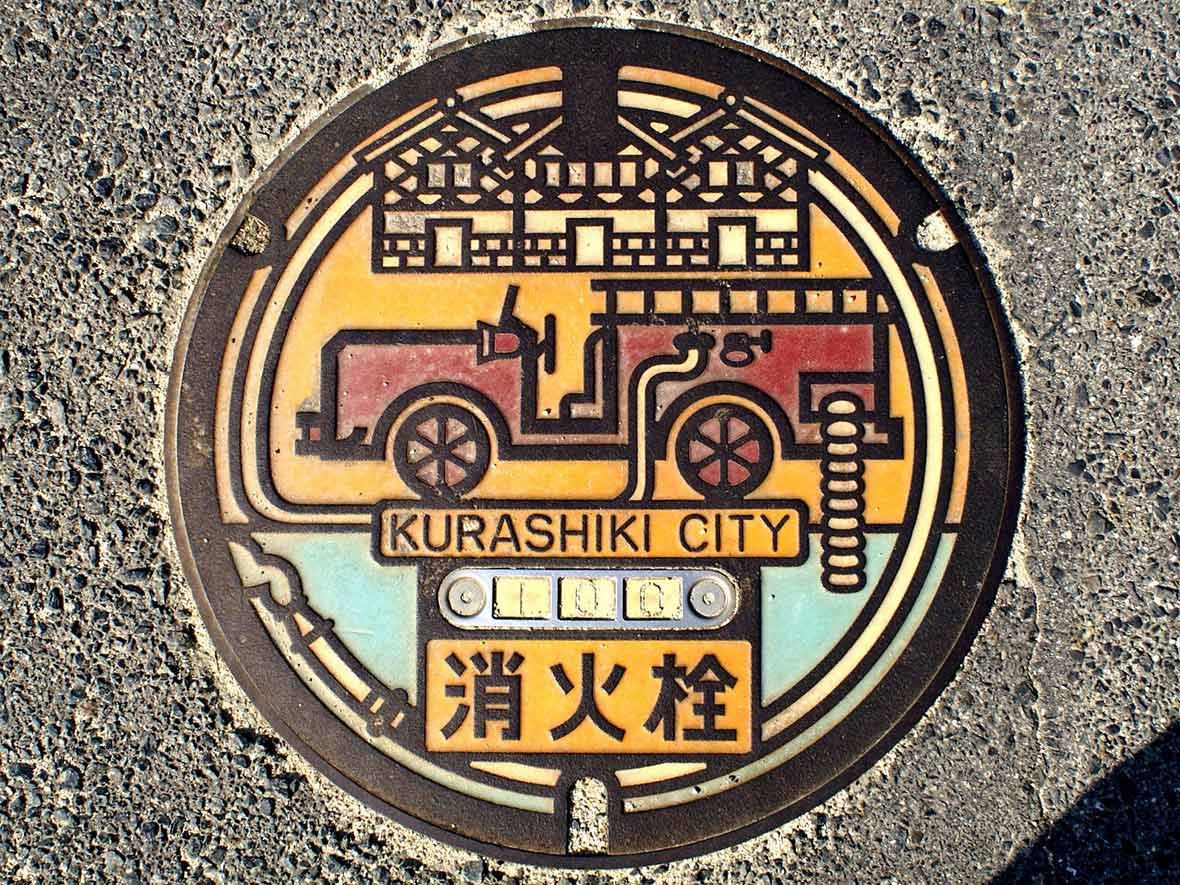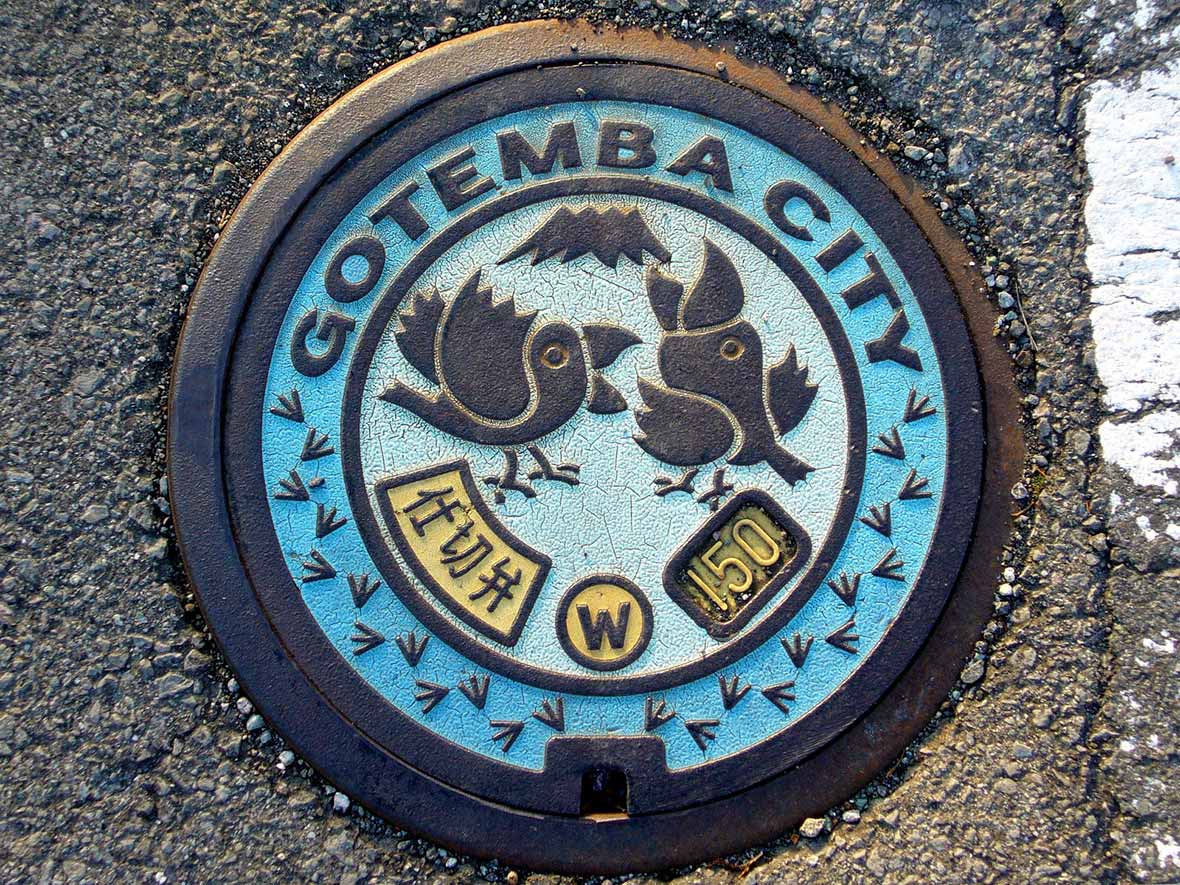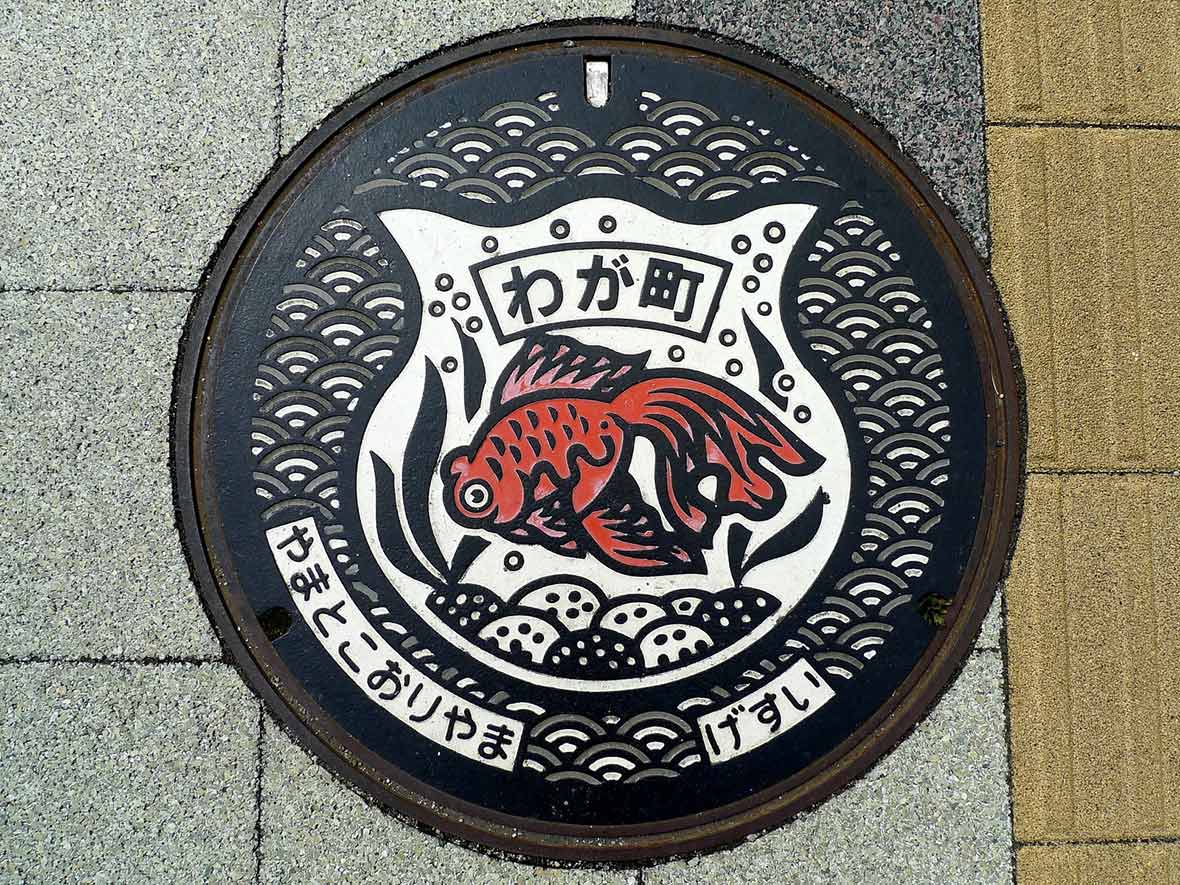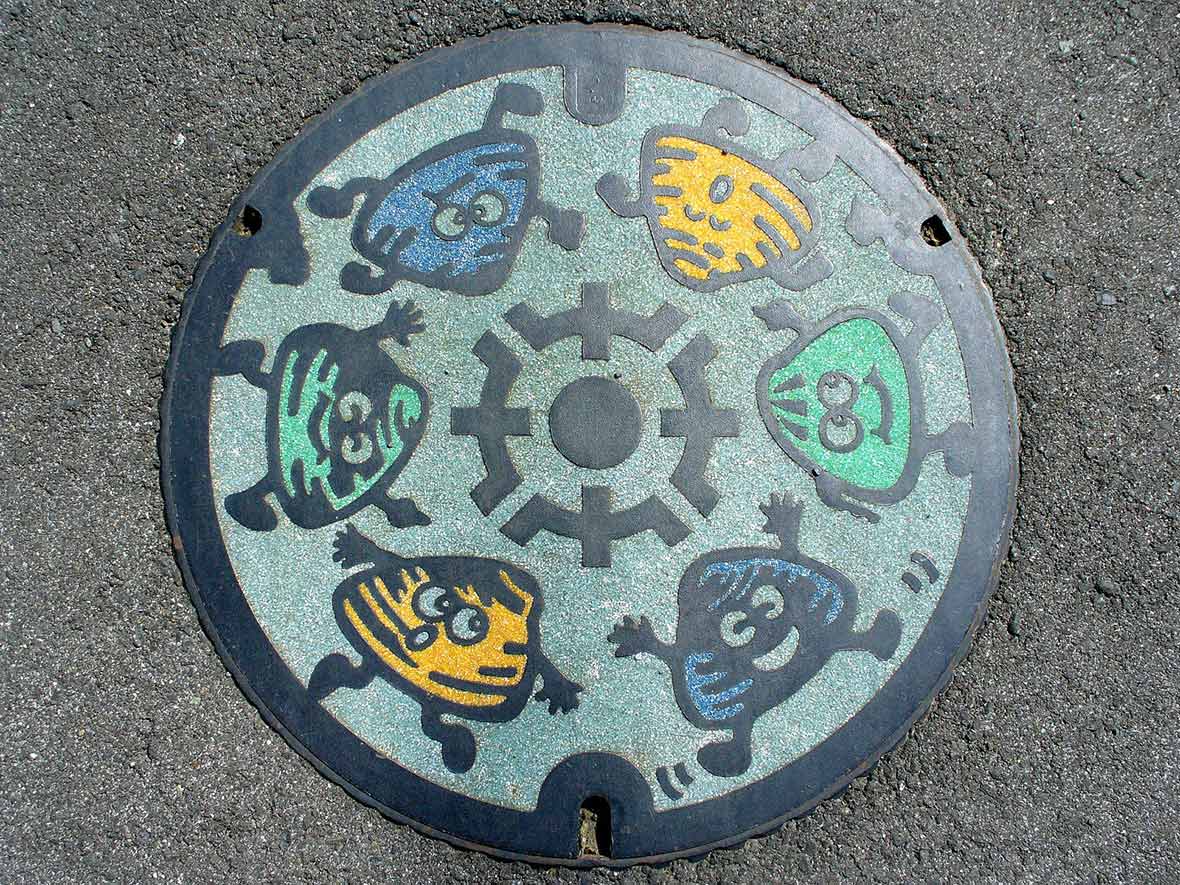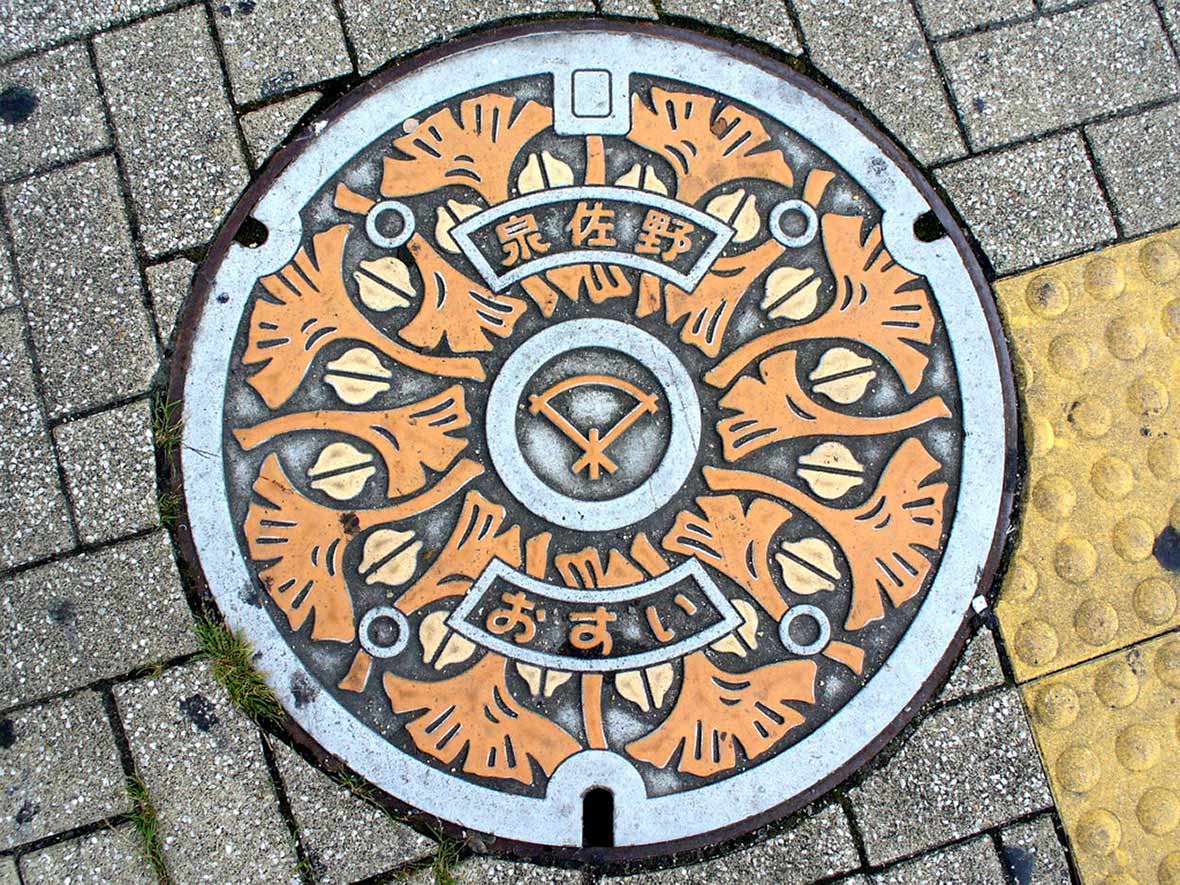
In the mid-1900s, Tokyo and other major Japanese cities started implementing new manhole covers. Using textured surfaces to increase traction for passing traffic on rainy days, the new designs were created with both safety and functionality in mind. Not long after the implementation of these new manhole lids, Yasutake Kameda, an official from the Ministry of Construction, was tasked with convincing other Japanese provinces to connect to the main sewage system, which was a costly operation. In order to win over the public, he had a brilliant plan. Yasutake approached all the various municipalities with a proposition that allowed them to design their own manhole covers. His success is evident; throughout the country, turning manhole covers into beautiful pieces of art has become a tradition that’s still alive and well today.
1900年代半ば、東京や日本の主要都市では新しいマンホールの蓋の実装が始まりました。雨の日の交通用に静止摩擦を高める質感で、安全性と機能性を考慮した新たなデザインが生まれたのです。その直後に建設省の職員・亀田泰武氏は、コストの高い主要下水道の連結事業において、多くの地方自治体を説得する任務を任されました。亀田氏には、大衆を説得させるための見事な戦略がありました。マンホールの蓋に独自のデザインを施すという提案を元に、様々な市町村と交渉を始めたのです。その成果は見事に現れ、マンホールの蓋を装飾的な芸術作品に変えたこの時の慣習が、今も日本全国で受け継がれています。
The entire country of Japan now boasts over 6,000 of these custom manhole lid designs. They can be spotted in large metropolises as well as various rural areas. On top of that, there are even multiple museums throughout the country dedicated to manhole covers; some companies have even organized specialized committees that researches and preserves these lids. This cultural phenomena has attracted a devout following, including S. Morita, a photographer who has become well known for finding and documenting these works of art.
日本の大都市だけでなく数々の農村地域には、現在6千個以上の特注マンホールデザインが見られます。さらに国内では、マンホールの蓋のみを集めた専門博物館が多数あるだけでなく、蓋を調査して保管する専門委員会を組織化した企業さえ存在します。この文化的現象は、このような芸術作品の発掘とドキュメント化で著名な写真家、S. Morita氏のような熱心な愛好家を魅了してきました。
In Morita’s photos, the multicolored manhole lids can be seen exploring a wide spectrum of subjects, with animal and plant life, cultural customs, and history being the most common themes. At times, the manhole covers are designed to commemorate certain events or dates. There are even manholes that feature characters from the famous Japanese anime Detective Conan. The designs on certain manhole covers also serve as identifiers for the jurisdiction responsible for maintenance. Others might place more emphasis on functionality and practicality, some feature directions, others might cover up subterranean fire hydrants, and some lids in residential areas even offer directions to nearby emergency shelters by using different colored arrows to indicate how far the shelter is. There are also taboos when it comes to manhole cover art, with an unspoken rule being to not feature portraits of people. Besides portraits, it’s also uncommon to see national shrines and temples on these lids.
Morita氏の写真には、最も一般的なテーマの動植物、文化的慣習、歴史など、幅広いテーマを読み取れる色彩豊かなマンホールの蓋が見られます。マンホールの蓋は、特定の行事や日付を記念してデザインされることがあります。さらには、人気アニメ『名探偵コナン』のキャラクターが登場するマンホールもあります。一部の蓋では、当該地域のメンテナンス用の目印とされるデザインもあります。他にも機能性や実用性に重点を置いたもの、方向を示すもの、地下消火栓を覆うもの、また、住宅街では近隣の緊急避難所への道順が描かれ、色違いの矢印で避難所までの距離を示すものもあります。マンホールの蓋のデザインに関しては禁止事項もあり、人物の肖像を使用してはならないという暗黙のルールがあります。肖像の他に、神社仏閣が描かれた蓋はほとんど見かけられません。
The next time you’re in Japan, take notice of the ground when you’re walking about. You just might find yourself standing on a piece of art!
日本に訪問の際、街を歩く時にはぜひ地面に目を向けてみてください。気が付いたら芸術作品の上に立っているかもしれません!

